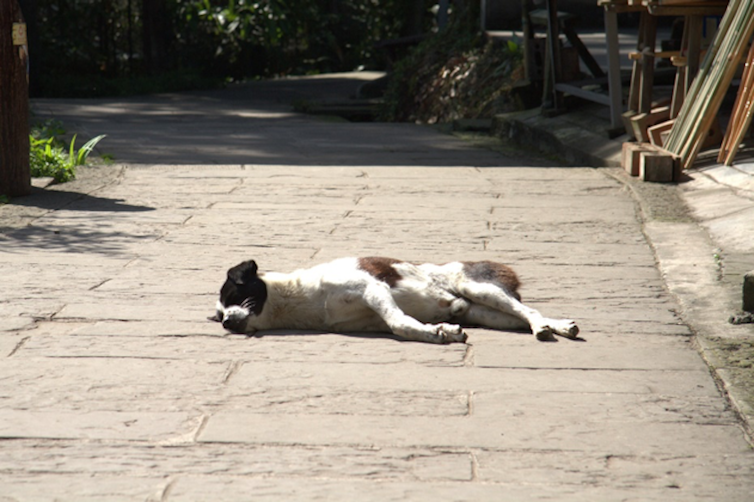
If there’s one issue that has gripped the dog-loving community for the past few years, it’s that of cereals in dog food, and in particular in the ingredients that make up kibbles.
The charges are manifold: the grains are said to cause bloating, obesity, gluten intolerance diabetes, and be riddled with mycotoxins (toxins produced by microscopic fungi). It took only a few years for the makers of dry dog foods to adapt to these fears, and many now claim to have eliminated cereals from their formulas, with the merits of gluten-free food widely touted.
But are cereals really harmful for our dogs?
Presumed culprits: cereals!
Behind the notion of cereal lie a number of terms that are often confusing for consumers, including carbohydrates, gluten and mycotoxins.
A cereal is a herbaceous plant cultivated mainly for the nutritional value of its grains. These mostly hail from the Poaceae family, more commonly known as grasses. The best known and most widely cultivated in the world are wheat, maize, rice and barley.
On average, a grain of wheat contains 70% starch, a complex carbohydrate. Gluten refers to a group of proteins contained in the seeds of cereals from the Poaceae group.
Charge No. 1: Failing to respect a dog’s “natural” diet
The first charge levelled against foods containing cereals is that they do not respect the dog’s “natural” diet. To pin down what the latter may be, scientists have a choice between examining prehistoric or feral dogs, which we define as individuals of domesticated species that have little or no dependence on humans.
Analysis of canine remains in tombs at various sites in the northeastern Iberian Peninsula dating from the Early Middle Bronze Age (end of the 3rd to 2nd millennia BC) has shown that their diet was fairly similar to that of humans, and contained cereals in some cases. The diet of feral dogs, on the other hand, is also mainly based on human waste, made up mostly of cereals and human faeces.
We can therefore conclude that dogs’ diets stretching back to prehistoric times have consisted of human food waste that, in some cases, contains cereals. This is quite different from the impressions we have of the “natural” diet of the dog – often represented in our imaginations as hunting, like a wolf in the wild.

Charge No. 2: Dogs can’t digest starch
Contrary to popular belief, dogs have acquired some salivary alpha amylase – an enzyme responsible for kick-starting the process of breaking down starch – throughout their evolution, and can therefore digest a moderate quantity of starch.
During the domestication process, [certain genes] that play an essential role in starch digestion were selected. Over time and through selection associated with the creation of breeds, the number of copies of the gene encoding the production of starch-digesting enzymes increased depending on the dietary habits of the breeds. Dogs are therefore capable of digesting starch, although not all breeds are equal.
While dogs can survive without starch in their diets, its presence remains necessary in certain physiological conditions such as gestation and lactation.
Charge No. 3: Gluten makes dogs ill
The consumption of gluten-derived products can lead to adverse reactions of three known kinds: allergic, autoimmune and miscellaneous.
In dogs, the relationship between gluten and intestinal disease has been studied in the Irish setter for around 20 years, with researchers having yet to establish any causality. In Border Terriers, an association between gluten and paroxysmal dyskinesia (episodic involuntary tremors) has been noted. At present, these are the only two reports of pathologies that could be associated with the presence of gluten.
In this context, an avoidance diet could be considered to test the dog’s sensitivity.
Charge No. 4: Cereals can poison dogs with mycotoxins
Mycotoxins are toxins produced by microscopic fungi during plant growth, storage, transport or processing. They can be present in various plant organs, including grains, fruit and tubers.
The most common one in animal feed is alfatoxin B1, found in wheat grains in particular. In humans and animals, mycotoxins can cause various health problems (liver toxicity, kidney toxicity, etc.). Nevertheless, control methods are put in place at harvest time and the food industry also uses detoxification methods. In general, moulds do not grow on properly dried and preserved food, so effective drying and correct storage are effective measures against moulds and the production of mycotoxins.
Compared with “premium” dog food, the total aflatoxin content is generally higher for “economy” dog food. This difference can be partly explained by the use of lower-cost products with less controlled storage conditions. The source of nutrients of animal origin is also a factor.
So, are cereal-free foods healthier?
Cereal-free foods are not always starch free, but protein-rich plants such as peas, lentils and beans have lower carbohydrate levels than cereals – that’s why they are of interest to the pet food industry. For example, pea seeds, contains 21% protein and 45% starch.
The starch in low-carbohydrate dog food is often replaced by fat. This may not be adapted to the animal’s situation, particularly if it’s overweight, obese or suffering from kidney problems. Furthermore, a cereal-free diet is not necessarily less rich in carbohydrates when the compositions are compared.
Finally, recent research has picked upon cases of heart disease (dilated cardiomyopathy) in dogs eating cereal-free foods rich in legumes, including in breeds not predisposed to this pathology. Although the association between cereal-free foods and dilated cardiomyopathy is not yet clear, caution is called for, particularly in the case of pea-based foods.
Verdict: It’s complicated
The charges levelled at cereals in dog foods are not as clear-cut as they may appear to be. Having eaten cereals since they were domesticated tens of thousands of years ago, dogs have developed the enzymes necessary for them to digest starch. Critically, research has found that gluten only poses a problem for a few individuals of uncommon breeds. While mycotoxins are found in all dog foods, their quantity is highly regulated by the industry.
In sum, there is currently no scientific justification for choosing a grain-free food for healthy dogs with no known medical conditions.
The authors do not work for, consult, own shares in or receive funding from any company or organization that would benefit from this article, and have disclosed no relevant affiliations beyond their academic appointment.
This article was originally published on The Conversation. Read the original article.







